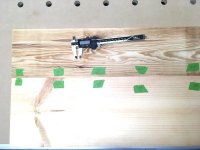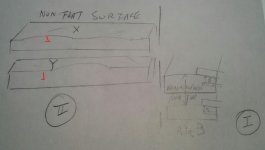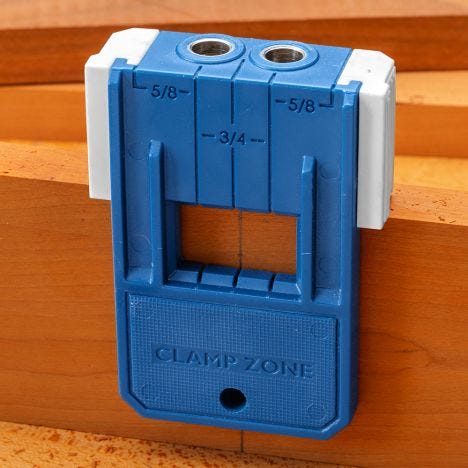I'm experiencing some misalignment of boards I am gluing up to make some Wood Duck nest boxes. I'm joining the boards to get enough width to cut them to size. The boards are ~3/4" pine that I took off the walls in my living room. Many of the boards have bows in them. Maybe I am missing something, when I measure the distance from the reference face to the top of the mortise, there is enough difference that the boards are misaligned enough to be noticeable. I can plane them flat, but the issue is more why is this happening?
I use the pins (2007 or so vintage domino) to cut tight mortises on each end and pencil marks to cut the other mortises loose. For board 1 and 2 here are the left to right measurements taken using Mitutoyo calipers.
Board 1 Board 2
7.1mm. 5.7mm. tight
6.9mm. 5.5mm. loose
7.5mm. 6.7mm. loose
7.4mm. 6.2mm. loose
7.3mm. 6.1mm. tight
I have noticed and measured this misalignment with other boards. I thought maybe it is a difference in the pressure to hold the domino flush to the reference surface or maybe there is some issue with the bit. I have made sure the fence plate -- the part with the handle -- is tight, but otherwise I am not sure of the source of the difference in the placement of the mortise.
Any ideas?
I use the pins (2007 or so vintage domino) to cut tight mortises on each end and pencil marks to cut the other mortises loose. For board 1 and 2 here are the left to right measurements taken using Mitutoyo calipers.
Board 1 Board 2
7.1mm. 5.7mm. tight
6.9mm. 5.5mm. loose
7.5mm. 6.7mm. loose
7.4mm. 6.2mm. loose
7.3mm. 6.1mm. tight
I have noticed and measured this misalignment with other boards. I thought maybe it is a difference in the pressure to hold the domino flush to the reference surface or maybe there is some issue with the bit. I have made sure the fence plate -- the part with the handle -- is tight, but otherwise I am not sure of the source of the difference in the placement of the mortise.
Any ideas?



